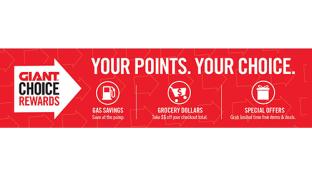5 Tips for Grocers Thinking About Launching a Loyalty Program
Loyalty programs have become ubiquitous among retailers, driven by technology advancements and increasingly tech-savvy consumers. The investments in this space have been made in the name of achieving a true “omnichannel” experience — a buzzword in the industry for years. The end goal has been relatively consistent across industries and companies: Identify and track customers to deliver personalized rewards and faster, seamless experiences.
A 2019 study by TSYS, a Global Payments company, suggests that retailers will continue to invest in the infrastructure that underpins loyalty programs. According to the research, 94% of retailers have or plan to implement a unified commerce platform within three years. This technology arms race will pressure those without loyalty programs — especially smaller retailers, like independent grocers — to decide how to compete in this space.
Loyalty peer pressure ratchets up
Large grocery retailers have the financial resources to invest in platforms that gather more information about customers while delivering real-time offers and other curated benefits. These companies have scale on their side, and that's a real advantage when rolling out a loyalty-focused omnichannel platform.
Loyalty fatigue is another problem for small and independent grocers. Because of their size, they have fewer resources to overcome customer pushback as loyalty programs saturate the market.
Of the 30 loyalty programs that the average North American household holds, 54% are inactive, according to the 2017 Colloquy Loyalty Census. As a result, the challenge for grocery stores isn't just launching a program, it’s also generating enrollment and keeping it top-of-mind for shoppers who are being bombarded by requests from every retailer with which they interact.
While retail peer pressure to launch a loyalty program is strong, that doesn’t mean it makes financial sense for every company. For many small and independent grocery stores, this decision isn't necessarily straightforward. The investment needs to have a business case behind it.
If it doesn’t help stores acquire new shoppers, drive sales and increase repeat customers, the program doesn’t make sense. Furthermore, loyalty schemes need to avoid alienating existing customers who may be experiencing fatigue as more businesses launch programs.
Assessment phase checklist
Evaluating the feasibility and value of loyalty programs requires the same care and deliberation of any financial investment. Here are five best practices for grocers to consider as they embark on this journey:
- Don’t overstate ROI. When assessing your need for a loyalty program, perform an honest analysis of how it will increase your sales volume. Ask yourself how shopper data can be translated into personalized offers that will help your bottom line, as well as how you will measure the impact of the program. Realizing the benefit of loyalty programs also means investing in training front-line staff. Employees have to understand the program and believe in it if they're expected to sell it to customers.
- Evaluate technical feasibility. Just because a particular loyalty program would be ideal, doesn’t mean it will work. Before an assessment begins, determine whether it can be integrated into your existing point-of-sale system. Also, determine which value-added reseller (VAR) would do the implementation, how long it will take, and the cost. Pay particular attention to mobile-enabled solutions. According to TSYS’ survey, 63% of consumers use their mobile phones while shopping. That means many customers could be browsing the web — most likely for better deals — while physically shopping at a store. Savvy grocers will invest in systems that provide offers via mobile (SMS, mobile emails and digital ads) to help shoppers make purchase decisions in the store that they might otherwise delay or give to another store.
- Make it easy. Most loyalty programs involve an initial customer signup and an ongoing method of tracking that individual’s interactions with a business (e.g., the plastic key card). Shoppers generally want to provide the minimum amount of information necessary to receive the program’s benefits, while businesses want to extract as much information as possible during the initial signup. The best loyalty programs minimize unnecessary friction while providing incentives for customers to provide more information about their experiences with the brand.
- Pilot your program. Changing how you interact with shoppers is a major endeavor, and even the best-run businesses will make missteps along the way. Reduce the risk to your business by launching programs with test groups. See how people react to the program, what the adoption rates are and how it impacts friction during customer interactions before rolling the program out more broadly.
- Make redemption effortless. Cutting coupons is a thing of the past for a reason: Most shoppers don’t want to deal with the hassle of searching for offers, holding on to a piece of paper and remembering to hand it to the cashier at checkout. Mobile-centric loyalty programs, for example, are successful because of easy accessibility. Chick-fil-A saw a 20% increase in conversions, thanks to its app-based Chick-fil-A One loyalty program, according to Digital Marketing News. The easier it is for people to redeem rewards, the more likely they are to sign up in the first place.
Consumers are taking the highly personalized experience they’re getting from companies like Amazon and expecting the same from other businesses with which they interact.
However, even as more retailers launch customer loyalty programs, it’s an open question which variations will actually succeed at increasing customer retention and improving the bottom line.
Small and independent grocers need to evaluate the upsides and downsides of the various kinds of loyalty programs so they can make an informed decision that makes sense for their business.







